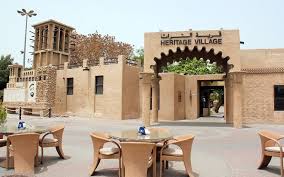
Cultural halls have long been at the heart of communities, serving as spaces where art, tradition, and social engagement come together. They are more than just venues for performances or exhibitions; they are cultural landmarks that provide residents and visitors with opportunities to learn, connect, and celebrate creativity. From art exhibitions and music concerts to workshops and heritage programs, cultural halls play a vital role in preserving cultural identity while fostering community participation. This guide will help you explore the different aspects of a cultural hall, highlighting its offerings, significance, and the ways it enriches society.
History and Significance of Cultural Halls
Cultural halls often have historical significance, reflecting a community’s commitment to arts and heritage. Many were established to preserve local traditions, provide a venue for artistic expression, and encourage educational programs. Over the years, these halls have evolved to accommodate modern performances, exhibitions, and cultural events while maintaining their role as centers for communal gathering. They are designed to be inclusive, welcoming people of all ages, and providing access to cultural resources that would otherwise be limited. The presence of a cultural hall enhances civic pride and encourages cultural participation, making it a cornerstone of community life.
Art Exhibitions and Creative Showcases
One of the main attractions of cultural halls is their art exhibitions. These spaces host a wide range of works, including paintings, sculptures, photography, and digital art. Exhibitions often feature local artists, offering a platform for emerging talent while also bringing in renowned creators from around the world. Visitors have the chance to experience diverse artistic styles, learn about cultural traditions, and engage with creative ideas. Many cultural halls also organize interactive exhibits, artist talks, and guided tours, creating an educational and immersive experience for attendees. Art exhibitions are essential in promoting cultural understanding and inspiring creativity in the community.
Music, Dance, and Theater Performances
Cultural halls are hubs for performing arts. Music concerts, dance performances, and theatrical productions are held regularly, showcasing both local talent and international acts. These performances cater to different age groups and tastes, from classical music lovers to contemporary art enthusiasts. Live performances provide audiences with unique experiences that cannot be replicated online, offering emotional and cultural enrichment. In addition to entertainment, performances often highlight cultural stories, traditions, and social themes, helping audiences connect more deeply with their heritage and the wider world.
Educational and Community Programs
Educational programs are a key aspect of cultural halls. Workshops, lectures, and interactive sessions are organized for students, educators, and community members. Programs may include art classes, music lessons, storytelling sessions, and heritage education, all designed to enhance learning and cultural awareness. Community programs also foster social interaction, encouraging people to participate actively in creative projects, volunteer initiatives, and collaborative events. These programs ensure that cultural halls are not only venues for passive observation but spaces for active engagement, learning, and personal development.
Key Features and Offerings
-
Art exhibitions showcasing local and international artists
-
Live music, dance, and theater performances
-
Educational workshops and interactive programs
-
Heritage and cultural festivals celebrating local traditions
-
Guided tours and artist talks for deeper insights
-
Community engagement activities and volunteer opportunities
-
Events catering to children, families, and special interest groups
These features make cultural halls versatile spaces that serve multiple functions, from entertainment and education to community engagement and cultural preservation.
Visiting Tips and Accessibility
Cultural halls are designed to be visitor-friendly and accessible. Many provide clear signage, comfortable seating, and facilities for people with disabilities. Tickets for certain performances or exhibitions may need to be booked in advance, especially for popular events. Visitors are encouraged to check event schedules online, read descriptions of exhibitions, and plan visits according to interests. Some cultural halls offer free entry for community programs, making arts and heritage accessible to a broader audience. Additionally, staff members and volunteers often assist visitors, ensuring a welcoming and informative experience.
Online Resources and Virtual Engagement
In the digital age, many cultural halls have expanded their reach through online platforms. Virtual tours, live-streamed performances, and online workshops allow people to engage with arts and heritage from anywhere in the world. Social media channels provide updates on upcoming events, exhibition highlights, and educational opportunities. These online resources ensure that cultural experiences are accessible to those who cannot attend in person, while also promoting the hall to a global audience. Virtual engagement has become a vital tool for connecting communities, sharing culture, and fostering participation beyond physical boundaries.
Conclusion
Cultural halls are more than buildings; they are living centers of art, heritage, and community life. By offering exhibitions, performances, educational programs, and community initiatives, they provide a space where creativity and cultural appreciation thrive. Visitors to a cultural hall can immerse themselves in art, music, dance, and tradition while participating in workshops and community programs that encourage learning and engagement. These halls strengthen cultural identity, foster social connections, and inspire creativity in both residents and visitors. Exploring a cultural hall is not just about attending events it is about experiencing the heart of a community, celebrating heritage, and participating in the ongoing story of art and culture.




